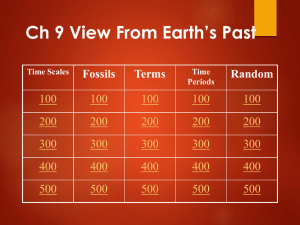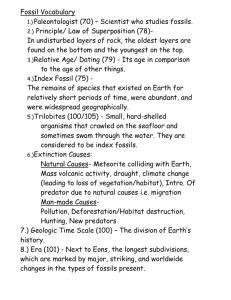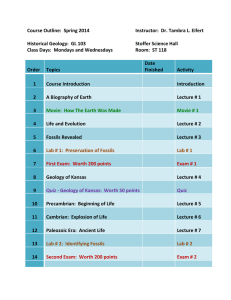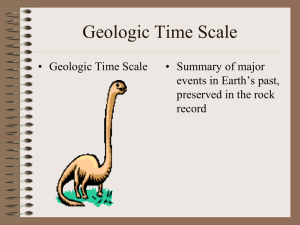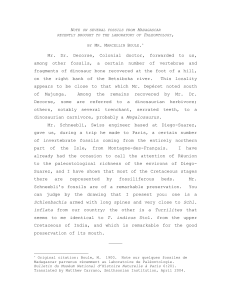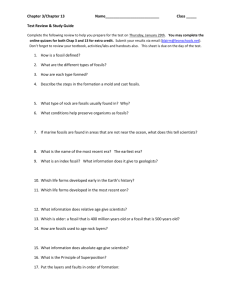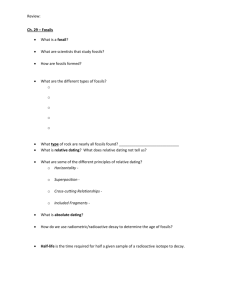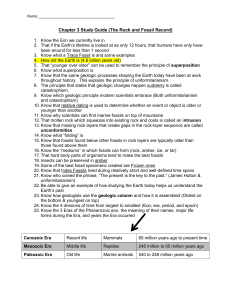Views of Earth`s Past
advertisement
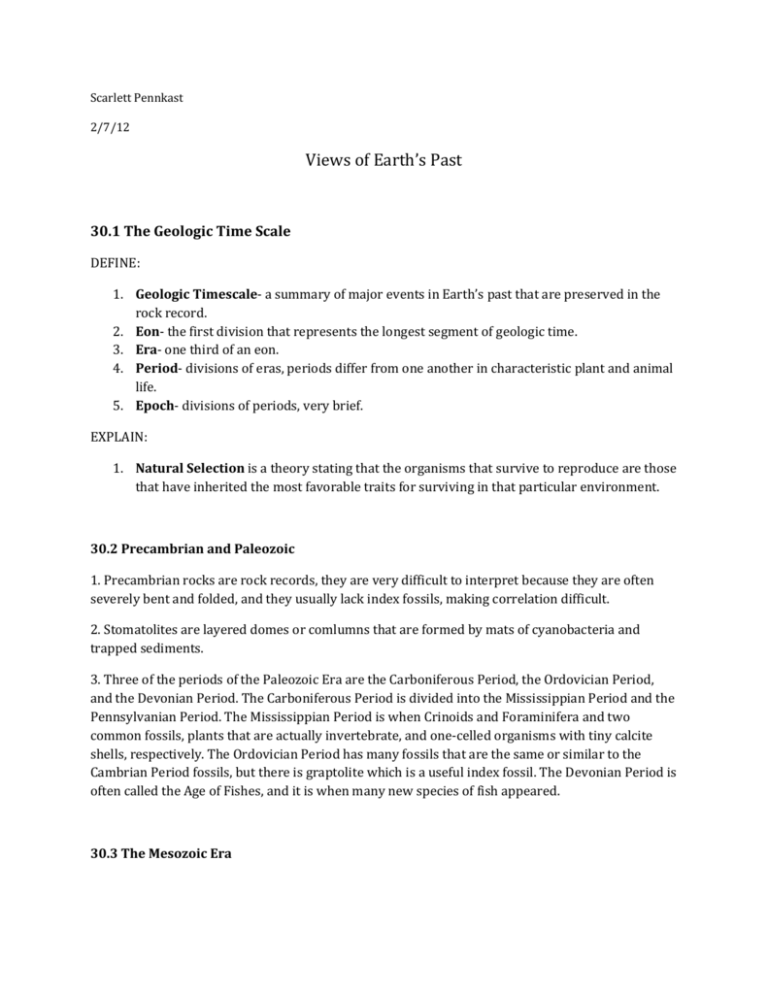
Scarlett Pennkast 2/7/12 Views of Earth’s Past 30.1 The Geologic Time Scale DEFINE: 1. Geologic Timescale- a summary of major events in Earth’s past that are preserved in the rock record. 2. Eon- the first division that represents the longest segment of geologic time. 3. Era- one third of an eon. 4. Period- divisions of eras, periods differ from one another in characteristic plant and animal life. 5. Epoch- divisions of periods, very brief. EXPLAIN: 1. Natural Selection is a theory stating that the organisms that survive to reproduce are those that have inherited the most favorable traits for surviving in that particular environment. 30.2 Precambrian and Paleozoic 1. Precambrian rocks are rock records, they are very difficult to interpret because they are often severely bent and folded, and they usually lack index fossils, making correlation difficult. 2. Stomatolites are layered domes or comlumns that are formed by mats of cyanobacteria and trapped sediments. 3. Three of the periods of the Paleozoic Era are the Carboniferous Period, the Ordovician Period, and the Devonian Period. The Carboniferous Period is divided into the Mississippian Period and the Pennsylvanian Period. The Mississippian Period is when Crinoids and Foraminifera and two common fossils, plants that are actually invertebrate, and one-celled organisms with tiny calcite shells, respectively. The Ordovician Period has many fossils that are the same or similar to the Cambrian Period fossils, but there is graptolite which is a useful index fossil. The Devonian Period is often called the Age of Fishes, and it is when many new species of fish appeared. 30.3 The Mesozoic Era 1. The three periods of the Mesozoic Era are the Triassic Period, the Jurassic Period, and the Cretaceous Period. The Triassic Period lasted from about 248 million years ago to 206 million years ago, which is when dinosaurs made their first appearance on land. The Jurassic Period lasted from about 206 million years ago to about 144 million years ago, and was when many fossils of large dinosaurs were found. The Cretaceous Period lasted from about 144 million years ago to about 65 million years ago, and was when the largest dinosaurs existed. 2. They changed from the beginning of the Triassic Period to the end of the Cretaceous Period because they became much larger. 3. They think that it struck Earth near the present-day Yucatan Peninsula in Mexico., and the dust may have covered the sun for years, killing about 50% of all life. 30.4 The Cenozoic Era 1. There was an extreme rise of mammals during the Cenozoic Era. 2. The Quaternary Period fluctuated majorly in temperature. Many ice glaciers formed and melted back and forth throughout the 2 million years.

